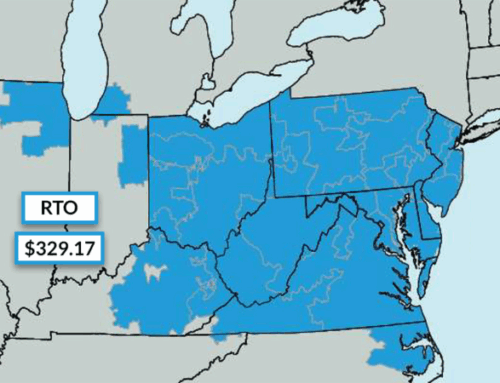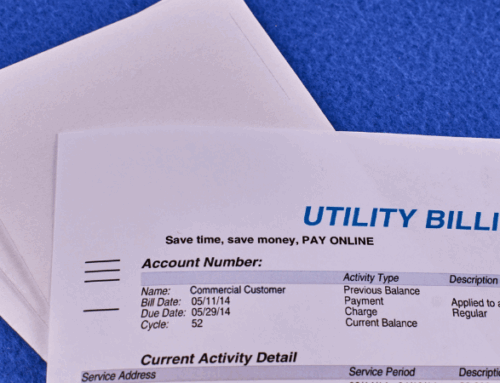In deregulated energy markets, understanding how consumers respond to energy price changes is a powerful tool for brokers and businesses looking to optimize energy costs. This concept, known as the price elasticity of energy demand, plays a critical role in how companies procure electricity, participate in demand response, and plan for the future. In this article, we’ll explore what elasticity really means in practice, how energy brokers use it strategically, and why it can be the difference between energy savings and high costs in a volatile market.
What Is Price Elasticity Of Energy Demand?
At its core, price elasticity of demand refers to how energy consumption changes when prices change. If demand is elastic, a small increase in price leads to a significant decrease in energy usage. If demand is inelastic, even a large price increase won’t change usage much. Energy demand is inherently behavior-driven. For example, a manufacturing plant may choose to reduce production during peak pricing periods, while a hospital must keep critical systems running regardless of cost. This behavioral variability makes elasticity a key element for brokers and buyers when evaluating procurement strategies.
Factors that influence energy demand elasticity include:
- Type of load (comfort, process, or critical)
- Availability of substitutes or storage
- Seasonality and weather dependence
- Ability to control or automate consumption
Let’s explore why elasticity matters in open energy markets.
Why Elasticity Matters In Deregulated Energy Markets
In deregulated energy markets, businesses have more control over how and when they buy electricity. Furthermore, due to the uncoupled billing of commodity, capacity, and transmission fees in these markets, consumers can respond to price signals accordingly and save money by curtailing usage. If a facility can shift usage away from high-cost hours, it might benefit from index-based or hybrid pricing models. If a business has inelastic demand, a fixed-rate contract may be more appropriate to provide cost certainty. Elasticity also matters in:
Capacity Tag Management
Reducing peak demand during anticipated coincident peak periods can help to lower future capacity charges. When capacity prices spike, such as the recent PJM 2025/26 auction, businesses with demand elasticity can respond accordingly to reduce costs.
Demand Charges
Many commercial rates are influenced by a facility’s peak energy usage each billing period. In fact, most delivery rate tariffs are calculated by the highest peak interval throughout a 30-day billing cycle. Businesses with flexible operations that can shift loads or shave peak demand can reduce these charges.
Contract Types
Elastic customers may consider entering into third-party supply contracts that have some index market exposure. Because index pricing can be much less expensive during off-peak hours, elastic customers can shift load to these hours in an effort to save costs.
How Energy Brokers Use Elasticity Insights
Price elasticity is a signal brokers can use to shape smarter energy procurement. By understanding how responsive a client is to price signals, brokers can align contract structures, demand strategies, and timing to optimize savings and reduce exposure. Here are some practical examples.
Designing Tailored Procurement Strategies
Energy brokers assess a client’s operational flexibility to determine their demand elasticity profile. A manufacturer that can shift production to evenings may benefit from a time-of-use rate product or block + index pricing. A hospital with critical needs likely prefers the price stability of a long-term fixed-rate contract. By tailoring energy procurement strategies to fit a client’s load responsiveness, brokers ensure that each business gets the best financial outcome given their operational constraints.
Leveraging Demand Response And Load Curtailment
Elasticity is a key factor in determining whether a business is a good candidate for demand response. DR programs reward participants for reducing consumption during peak demand periods on the grid. Facilities that can curtail load without impacting core operations, such as a warehouse turning off HVAC systems or a sewer plant running a backup generator, can benefit from DR incentives while also reducing capacity tag exposure.
Commercial vs. Residential Elasticity: What’s The Difference?
Commercial and industrial energy users typically exhibit higher price elasticity due to their ability to adjust operations based on market signals. These businesses often have control over process timing, access to building energy management systems, and, in some cases, on-site generation or battery storage. This operational flexibility allows them to participate in demand response, shift load during peak pricing, and capitalize on peak shaving strategies. Moreover, because their energy usage is substantial, even small changes in behavior can yield meaningful cost savings. Energy brokers working with these customers can tailor highly strategic solutions that leverage demand elasticity for both savings and risk management.
On the other hand, residential customers generally have far less price elasticity. Households maintain relatively fixed energy consumption patterns, particularly for essential services like heating and cooling, regardless of price changes. Behavioral and technological barriers, such as the absence of smart home devices or limited understanding of utility pricing, make it difficult for most homeowners to respond effectively to market prices. As a result, brokers and suppliers serving residential markets must focus more on fixed-price plans and customer education than on elasticity-driven strategies.
Practical Examples Of Elastic And Inelastic Behavior
| Elastic Demand | Inelastic Demand |
| Cab company charging EVs at night when prices are low | Hospitals running load no matter what the price to power critical systems |
| Running refrigeration defrost cycles during potential coincidental peak hours | Large malls unable to shut down air conditioning due to consumer comfort |
| Data center using battery storage backup during peak events to shed load | Summer school buildings running during mid-day hours may not be able to shift loads. |
Demand Elasticity Is A Strategic Advantage
For brokers and commercial energy users, understanding a facility’s energy demand elasticity profile enables more precise procurement, better contract alignment, and greater opportunity in demand-side programs. It also provides a critical edge in reducing exposure to price spikes and rising capacity charges. As market conditions evolve, leveraging elasticity insights can help you reduce energy expenses significantly.
At Diversegy, our team of energy market experts has been guiding commercial and industrial users through market difficulties for years. Contact our team today to assess your organization’s price responsiveness and unlock tailored strategies that drive savings.



